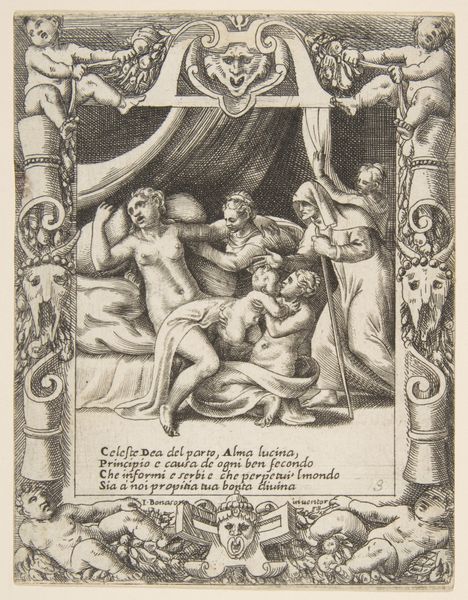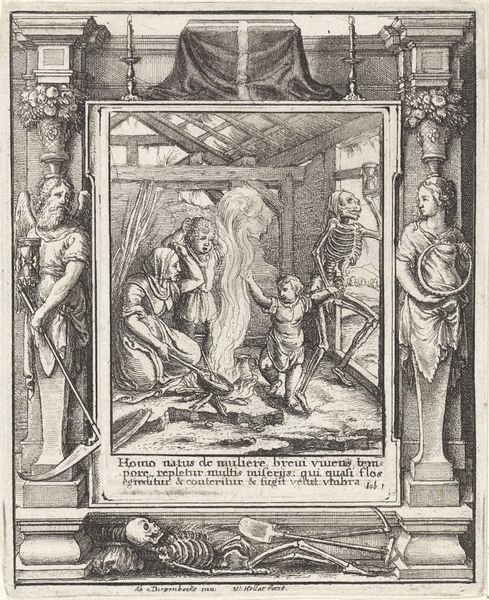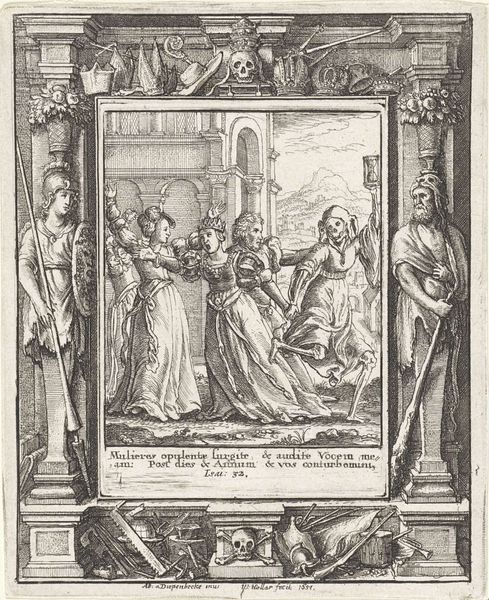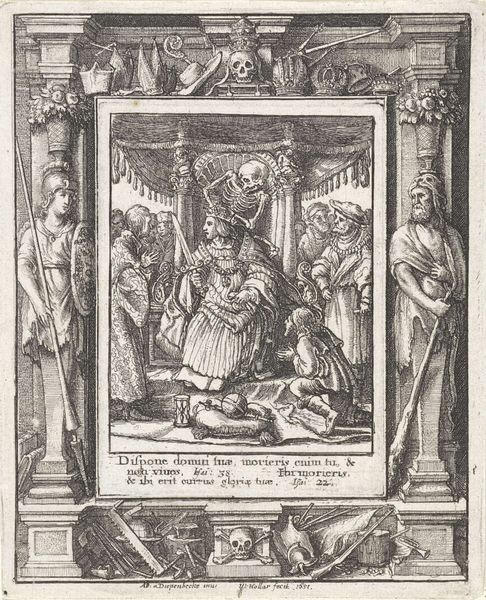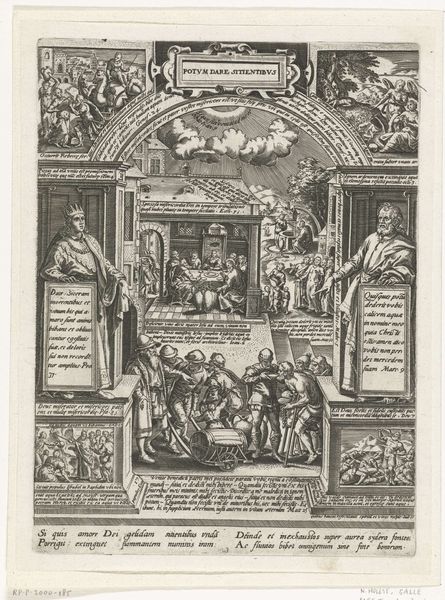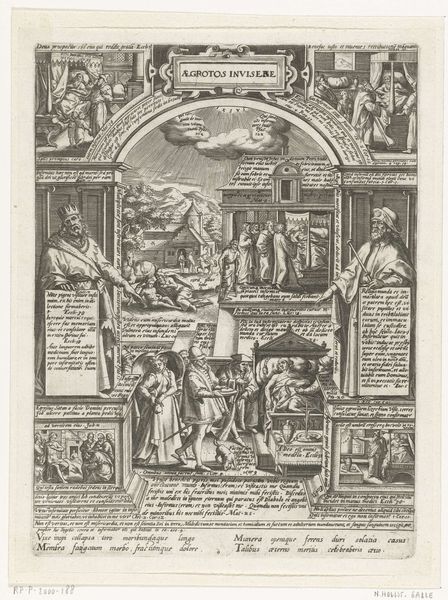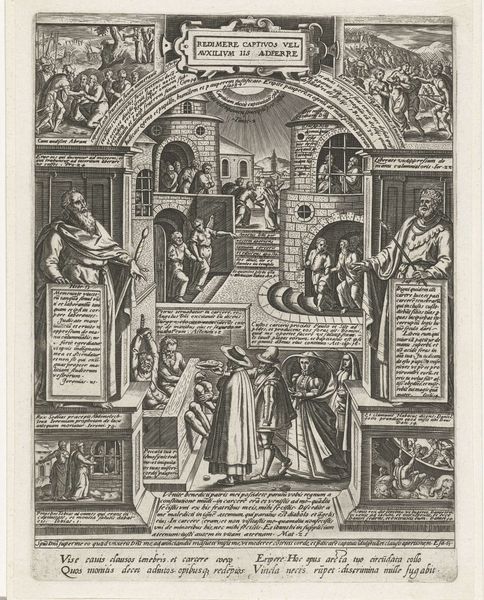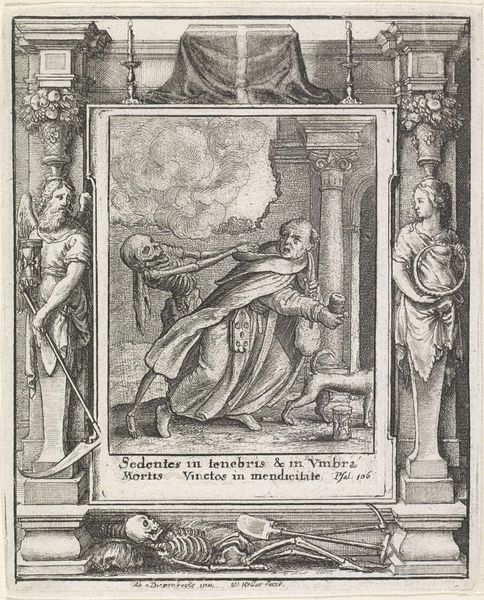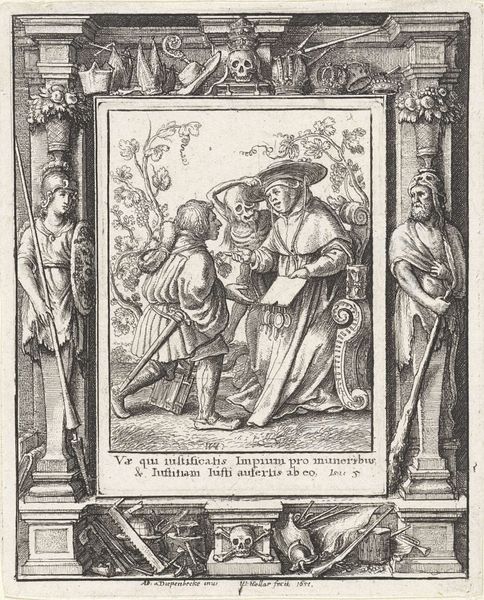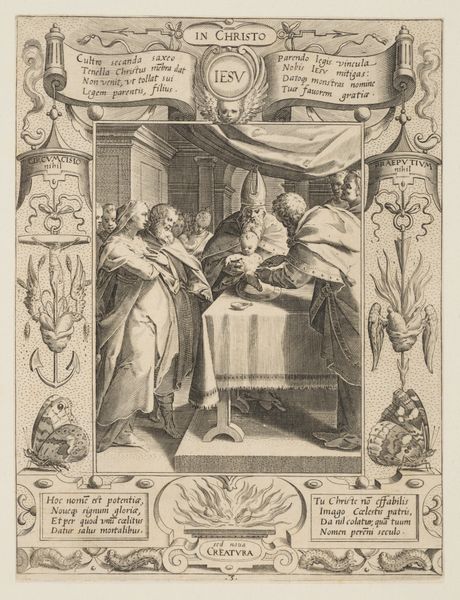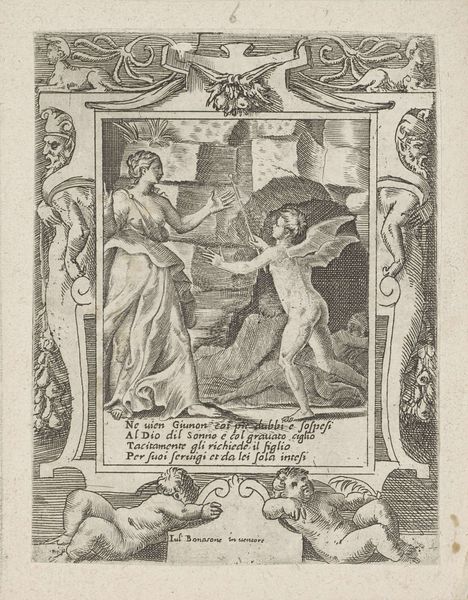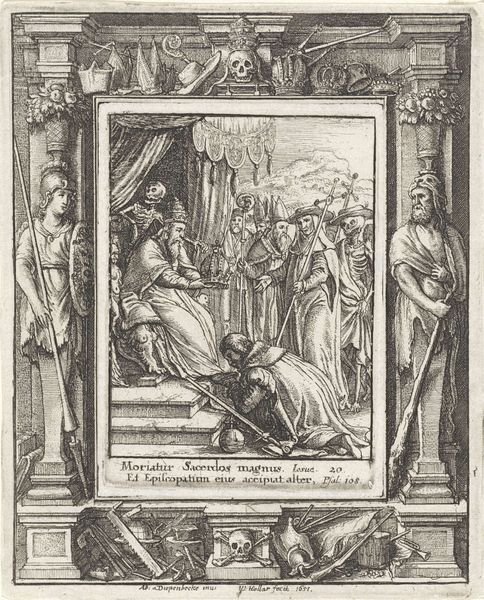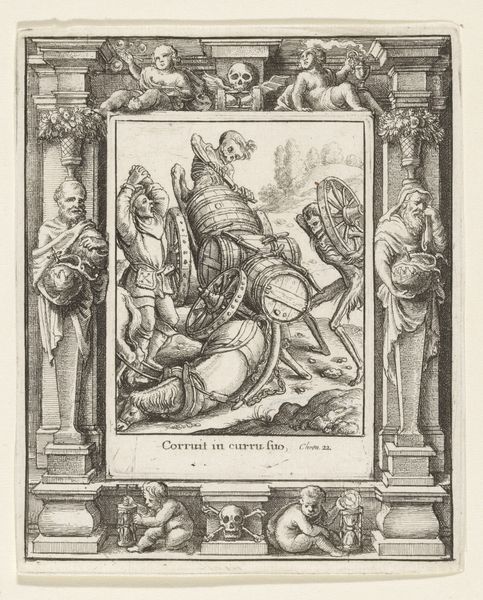
Dimensions: height 134 mm, width 101 mm
Copyright: Rijks Museum: Open Domain
Editor: Here we have "Juno suckling the young Hercules," an engraving by Giulio Bonasone, dating to sometime between 1501 and 1580. I'm immediately drawn to the intricacy of the lines, especially given the subject matter. It feels so detailed and somewhat unsettling, almost like a theatrical stage. How do you interpret this work, seeing as it's a print? Curator: What strikes me most is the means of production. This isn't just an image; it's an artifact of labor, of a specific historical process. The lines you mention weren't just drawn; they were etched, painstakingly, into a metal plate. The availability of the print allowed the broad circulation of imagery and the ideas that were imbued in this type of piece. Considering this, what social currents might this scene of Juno, Hercules, and the guarding soldier reflect? Editor: Well, it looks like a depiction of power, maybe even propaganda related to wealth? This act of nursing feels charged, like an almost transactional exchange happening under the watchful eye of some authoritarian figure with a spear! Is the choice of an engraving significant to expressing ideas of this nature? Curator: Absolutely. The act of reproducing an image through a laborious and reproducible process allows that imagery to be widely circulated amongst society. If we analyze Bonasone's practice and labor of physically making this image, how might this differ from other drawings that are unique, individual experiences only? I encourage you to look beyond the content. Consider Bonasone's role: he isn't a nobleman commissioning a painting, he is a craftsperson embedded in a specific mode of production and in an expanding marketplace for imagery. What would you call the historical art trend that enabled that change to occur? Editor: So the print's medium affects how we read its message about power, then... the value lies in the ability to copy and distribute this particular mythological story in early modern society through an economic act, but now it seems to critique the economic structure through the symbolism presented of Roman life. Seeing the connection here is really powerful! I did not expect to walk away from this with such insight on this style of work being less about pure artistic talent and leaning toward a functional skill for generating and circulating cultural imagery, but there we are!
Comments
No comments
Be the first to comment and join the conversation on the ultimate creative platform.
